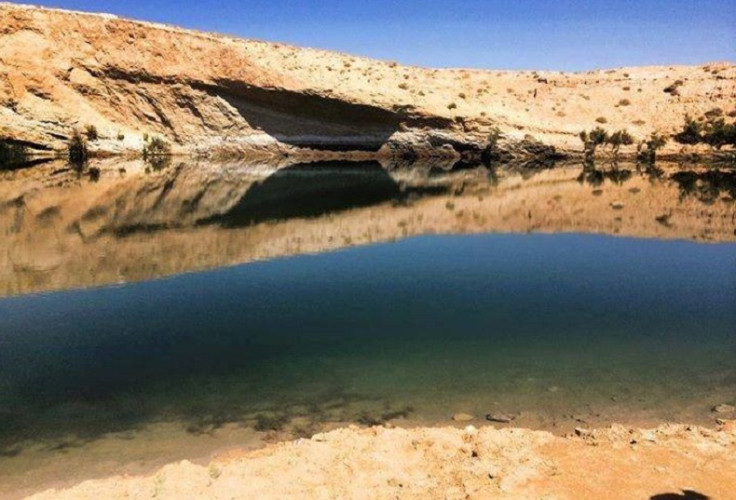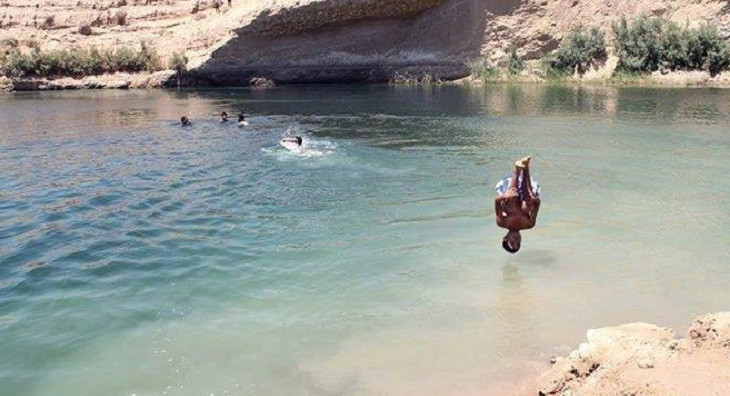Gafsa Beach: Mysterious Lake Discovered in Drought-Stricken Tunisia Could be 'Radioactive'

Hundreds of swimmers have been flocking to a mysterious new lake in the Gafsa region of southern Tunisia, but the sudden appearance of the body of water in the drought-stricken area has raised concerns about its origin and quality.
Hailed as a miracle by locals, authorities have warned the lake could actually be radioactive.
Shepherds discovered Gafsa beach or "Lac de Gafsa", which is between 10m and 18m deep and spread over a surface of around one hectare, around 25km from Gafsalongside Om Larayes road.
Since it was discovered three weeks ago, more than 600 people have been swimming, diving and scuba diving in the water, according to Au News.
"Some say that it is a miracle, while others are calling it a curse," journalist Lakhdar Souid told France24.
There is no official explanation for the lake's origins, but local geologists believe seismic activity may have disrupted the water table and caused groundwater to rise to the surface.

Gafsa's Office of Public Safety warned Tunisians that the water may be dangerous to swim in, as the region is rich in phosphate.
Tunisia is the fifth largest exporter of the chemical in the world and the Gafsa is home to one of the largest phosphate mines.
According to officials, the water may be contaminated or even radioactive.
Regardless, locals have continued to swim in the lake as no official ban has been put in place. Gafsa beach even has its own Facebook page.
"News of the lake's appearance has spread like wildfire and now hundreds of people, eager to escape a heatwave, go there to swim. While the origins of this lake remains a mystery, our biggest concern right now is the quality of the water," Souid added.
"This region is overflowing with large deposits of phosphate, which can leave behind radioactive residue so there is a real risk that this water is contaminated and carcinogenic (but) there is no security of any kind."
Over the past weeks, the colour of the lake has changed from a clear turquoise to a murky green.
"The site is certainly stunning and there are many large rocks perfect for diving but it has become infested with green algae, meaning that the water is stagnant and conducive to diseases," Mr Souid said.
"Despite the warnings issued by the Office of Public Safety, hundreds of swimmers have visited the lake. The site is certainly stunning and there are many large rocks perfect for diving. So to truly dissuade people from coming, we'll need something more convincing than a little warning."
© Copyright IBTimes 2025. All rights reserved.






















